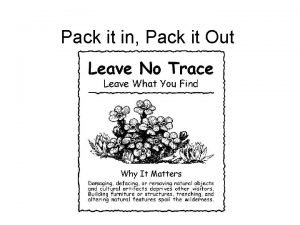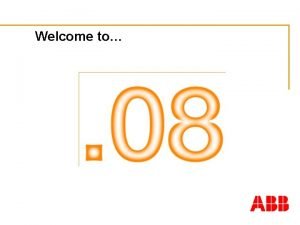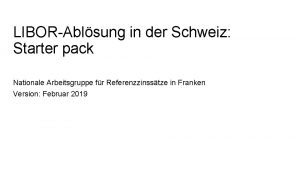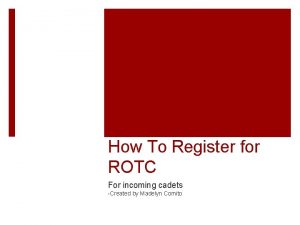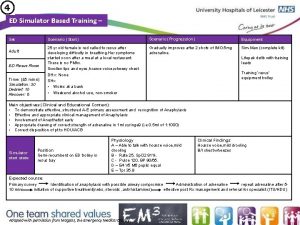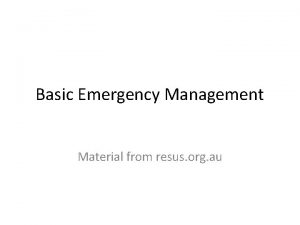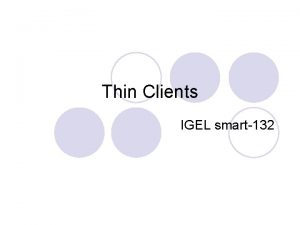igel O 2 Resus Pack igel O 2

















- Slides: 17

i-gel. O 2™ Resus Pack

i-gel. O 2™ Resus Overview • • A 2 nd generation of supraglottic airways made easy Single use, latex free, with a non-inflating cuff Manufactured from a soft gel like material Available in three adult sizes (3, 4 and 5)

The i-gel. O 2™Supraglottic Airway

Supplementary Oxygen Port • For the administration of passive oxygenation as a component of a cardiocerebral resuscitation protocol (CCR). • For the provision of supplementary oxygen during post -arrest care and patient transfer. Always keep the cap in place when not in use.

The i-gel. O 2™ being used to deliver passive oxygenation

The i-gel. O 2™ being used to deliver standard ventilation

Equipment Preparation Using the i-gel. O 2™ Resus Pack Size Selection 1. Choose the correct size of i-gel. O 2™ Resus Pack for your patient. Size Patient size Patient weight guidance* 3 Small adult 4 Medium adult 50 -90 kg 5 Large adult Color coded hook ring to allow quick and easy identification of size 30 -60 kg 90 + kg (65 -130 lbs) (110 -200 lbs) (200 + lbs) * While selection on a weight basis should be applicable to the majority of patients, individual anatomical variations mean the weight guidance provided should always be considered in conjunction with a clinical assessment of the patient’s anatomy.

Using the i-gel. O 2™ Resus Pack Pre-insertion Preparation 2. Open the packaging and take out the protective cradle containing the device. Remove the accessory pack that includes the support strap and packet of lubricant from the protective cradle and place to one side and within easy reach.

Using the i-gel. O 2™ Resus Pack Pre-insertion Preparation 3. Remove the i-gel. O 2™ and transfer it to the palm of the same hand holding the protective cradle, supporting the device between the thumb and index finger.

Using the i-gel. O 2™ Resus Pack Pre-insertion Preparation 3. Place a small bolus of lubricant on the middle of the smooth surface of the protective cradle.

Using the i-gel. O 2™ Resus Pack Pre-insertion Preparation 4. Grasp the i-gel. O 2™ with the opposite (free) hand along the integral bite block and lubricate the back, sides and front of the cuff with a thin layer of lubricant. (Ensuring any excess is removed prior to insertion. )

Using the i-gel. O 2™ Resus Pack Insertion technique 5. Grasp the lubricated i-gel. O 2™ firmly along the bite block. The patient should be in the ‘sniffing the morning air’ position with head extended and neck flexed.

Using the i-gel. O 2™ Resus Pack Insertion technique 6. Position the device so that the i-gel. O 2™ cuff outlet is facing towards the chin of the patient. Introduce the leading soft tip into the mouth of the patient towards the hard palate.

Using the i-gel. O 2™ Resus Pack Insertion technique 7. Glide the device downwards and backwards along the hard palate with a continuous but gentle push until a definitive resistance is felt.

Using the i-gel. O 2™ Resus Pack Insertion technique 8. Once insertion has been completed, the tip of the airway should be located into the upper esophageal opening (a), with the cuff located against the laryngeal framework (b). The incisors should be resting on the bite block (c). b a c

Using the i-gel. O 2™ Resus Pack Insertion technique 9. Secure the device by sliding the Airway Support Strap underneath the patient’s neck and attaching to the hook ring. Take care to ensure there is sufficient tension to hold the i-gel. O 2™ securely in place, but not excessive tension that may cause trauma. Some adjustment of the strap may be needed to ensure optimal positioning. Alternatively the device can be secured by taping maxilla to maxilla.

Using the i-gel. O 2™ Resus Pack Insertion technique 10. Once the i-gel. O 2™ has been correctly prepared, inserted and secured, positive pressure ventilation can commence in accordance with applicable resuscitation guidelines*.
